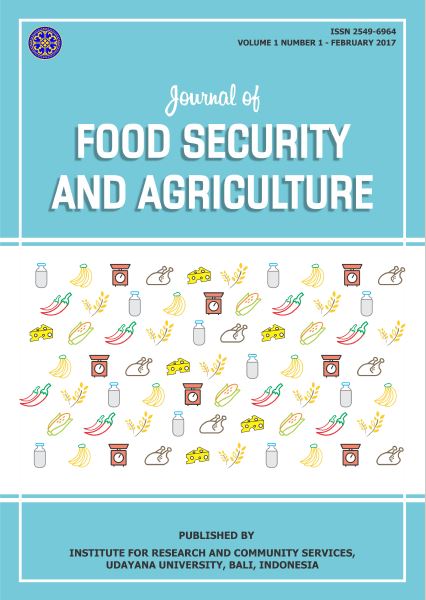Antioxidant Activities and Anthocyanin Content of Grape (Vitis vinifera) Skin Flour
Abstract
Utilization of grape skin flour as a byproduct of wine on food products can be done by processing the grape skin into
a functional flour. Functional characters from grape skin after being processed into flour can be maintained by blanching with
proper drying temperature. The purpose of this study was to determine the functional value of grape skin flour by blanching and
drying temperature. The research method used a factorial randomized complete block design. The first factor was pretreatment
with blanching and without blanching (blanching treatment of grape skin that was heated for 5 minutes at a temperature of 80ºC)
and the second factor drying temperature (40º, 50º, 60ºC). The parameters observed were antioxidant activity, total anthocyanins,
total phenols and vitamin C. Skin grape flour with treatments by blanching and drying temperature 45oC produce skin grape flour
with the best functional value of antioxidant activity 420.97 mgGAEAC/g, total anthocyanin 10.3 mg / 100g, total phenol 322.8
mg / 100g, and vitamin C content of 10.07 mg / 100g.






